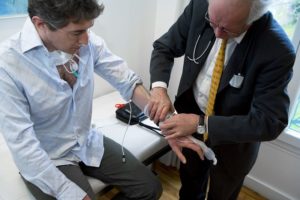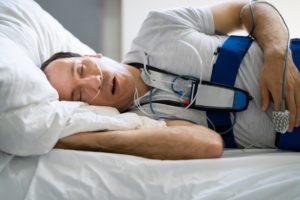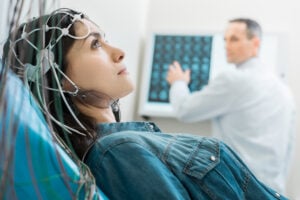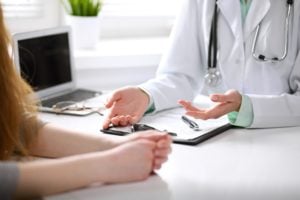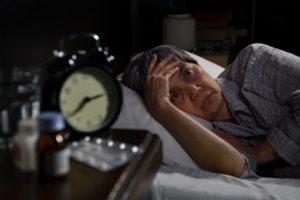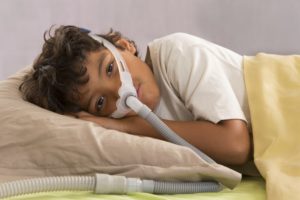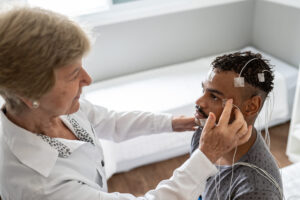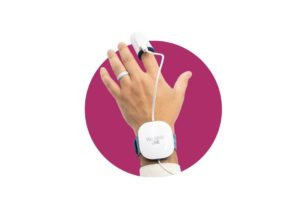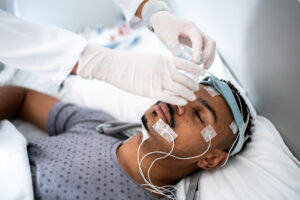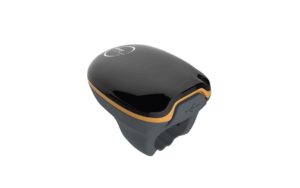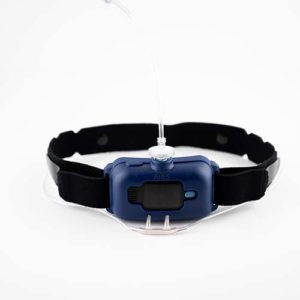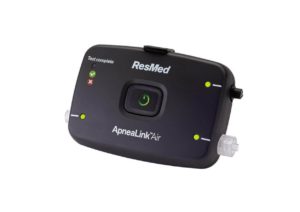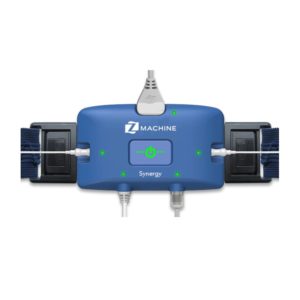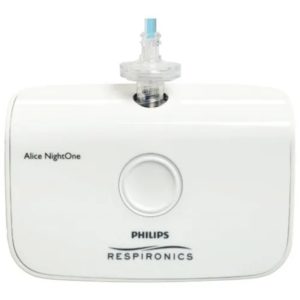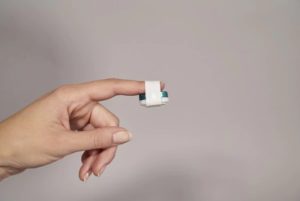When you buy through our links, we may earn a commission. Products or services may be offered by an affiliated entity. Learn more.
Epworth Sleepiness Scale
- What is the Epworth Sleepiness Scale?
- What Is Excessive Daytime Sleepiness?
- How the Epworth Sleepiness Scale Identifies Excessive Sleepiness
- How Does the Epworth Sleepiness Scale Work?
- Limitations of the Epworth Sleepiness Scale
- Can the Epworth Sleepiness Scale Be Used For Children and Adolescents?
- Other Types of Sleep Studies
The Epworth Sleepiness Scale (ESS) is one tool that helps doctors decide whether daytime drowsiness is a cause for concern. It is a simple questionnaire that measures how a person’s sleepiness affects their everyday life.
For people who have concerns about their alertness and ability to stay awake during the day, knowing about the ESS, including how the test works and what results may mean, can enable them to participate more actively in conversations with their doctor about their sleep and overall health.
Our Recommended At-Home Sleep Apnea Test

our partner at sleepdoctor.com
45% off a Home Sleep Test
Shop Now“Truly grateful for this home sleep test. Fair pricing and improved my sleep!”
Dawn G. – Verified Tester
What is the Epworth Sleepiness Scale?
The Epworth Sleepiness Scale (ESS) is a short questionnaire designed to assess daytime sleepiness . This basic test involves a self-assessment of how likely a person is to fall asleep in eight different situations. Doctors may use this test to help identify excessive daytime sleepiness.
Answering the questions only takes a few minutes and can be done on paper or electronically in a wide range of different settings, including at home.
The ESS was created in 1990. It was formulated by Murray Johns, a doctor specializing in sleep medicine, who later made minor changes to the questionnaire in 1997.
What Is Excessive Daytime Sleepiness?
Excessive daytime sleepiness (EDS) is characterized by drowsiness that arises when a person wants or needs to be awake and alert. EDS affects as many as 25% of people and can impact a person’s daily life by impairing concentration, reducing performance at work and school, and heightening the risks of serious accidents, including when driving a motor vehicle.
EDS is not a sleep disorder, rather it occurs as a symptom of another health issue . Causes of EDS include poor sleep as well as many sleep disorders, including obstructive sleep apnea and narcolepsy. Several other conditions affecting physical and mental health can also cause EDS.
How the Epworth Sleepiness Scale Identifies Excessive Sleepiness
The Epworth Sleepiness Scale applies a standardized method to measure a person’s own evaluation of their level of daytime drowsiness. Through a short series of questions, the test can quickly quantify a person’s propensity to doze off during typical daily activities.
Doctors may use the ESS to detect excessive daytime sleepiness , assess its severity and impact on daily life, and monitor how it changes over time, including in response to treatment.
The ESS can be useful for doctors because not everyone describes sleepiness in the same way. By using a consistent set of questions, the ESS creates a framework for quantifying what is otherwise a highly subjective symptom.
However, the ESS alone cannot diagnose excessive daytime sleepiness or any other sleep disorder. In many cases, the ESS is used as an initial test, along with a medical history and physical exam, to determine whether other kinds of testing are necessary.
Who Can Benefit From the Epworth Sleepiness Scale?
The Epworth Sleepiness Scale may be helpful for people who experience difficulties staying awake and alert during the day. The ESS generates a simple score to measure daytime drowsiness, and the results of the test can help determine whether a person’s level of sleepiness warrants further testing.
As part of an initial evaluation of daytime sleepiness, the ESS can be beneficial because of how quickly the test can be taken. Through its focus on the likelihood of actually falling asleep in different real-world situations, the ESS may help distinguish excessive daytime sleepiness from general fatigue.
The ESS may also benefit people who have already been diagnosed with excessive daytime sleepiness because the test can be taken at multiple points in time to track whether symptoms have changed and whether they are getting better in response to treatment.
How Does the Epworth Sleepiness Scale Work?
The Epworth Sleepiness Scale works by asking a person to rate on a scale of 0 to 3 how likely they are to fall asleep in different situations. A rating of 0 means they would never fall asleep, and a 3 reflects a high likelihood of dozing off.
These ratings are applied to eight situations:
- Reading while sitting down
- Watching TV
- Inactively sitting in a public setting
- Sitting in the passenger seat of a car for one consecutive hour
- Lying down to rest in the afternoon
- Sitting and talking with another person
- Sitting quietly after eating lunch without having consumed alcohol
- Sitting in the driver’s seat of a car while stopped for a few minutes in traffic
This questionnaire may be offered as a one-page form to fill out before or during a doctor’s appointment. The test can also be sent electronically through a secure online health portal. In some cases, the questions may be asked aloud by the doctor who records the score.
Once a rating has been provided for each of the eight situations, the overall score can be added up to see where it falls on the Epworth Sleepiness Scale.
How Is Your Score on the Epworth Sleepiness Scale Calculated?
Calculating the ESS score is straightforward. For each of the eight questions, the response includes a rating from 0 to 3. The eight ratings are added together to calculate a total score between 0 and 24.
What Does Your Score on the Epworth Sleepiness Scale Mean?
All scores on the Epworth Sleepiness Scale fall between 0 and 24. Scores from 0 to 10 reflect normal levels of daytime sleepiness, and scores over 10 are considered to reflect excessive daytime sleepiness.
The creators of the ESS established a breakdown of each range of scores.
| Score | Interpretation |
|---|---|
| 0 to 5 | Low level of normal daytime sleepiness |
| 6 to 10 | Higher level of normal daytime sleepiness |
| 11 to 12 | Mild excessive daytime sleepiness |
| 13 to 15 | Moderate excessive daytime sleepiness |
| 16 to 24 | Severe excessive daytime sleepiness |
These ranges were established based on the results of a small study that compared ESS scores in people with diagnosed sleep disorders to those in people with no known sleeping problems.
It is important to note that the ESS score alone is not definitive in determining whether a person has excessive daytime sleepiness. A person’s ESS score may vary when taken at different times , and in-depth studies on the ESS are limited. As a result, the results of the ESS must be considered along with someone’s medical history, physical exam, other symptoms, and, if necessary, additional testing.
Limitations of the Epworth Sleepiness Scale
While the Epworth Sleepiness Scale is one of many tools that can enable doctors to assess a person’s daytime drowsiness, it is not a perfect test. The test has limitations that relate to its precision and its uses in different medical situations.
Several issues have the potential to affect the accuracy and dependability of the ESS.
- Subjective assessments: Despite having standardized questions, the ESS is still based on subjective answers. A person’s self-assessed levels of sleepiness may not align with how others perceive their sleepiness and may also vary based on the education level of the person taking the test.
- Limited research: Although initial studies have shown that the ESS can provide relevant data, the total body of evidence about the performance of the ESS is limited.
- Test-retest variability: Some studies have found notable variation between ESS scores when a series of tests are performed over time.
- Agreement with other tests: Results from the ESS do not always align closely with other measurements of sleepiness .
In addition, there are limitations to how and when the ESS can be used.
- Not diagnostic: The ESS alone is insufficient to diagnose excessive daytime sleepiness. The ESS also does not provide information about the causes of EDS.
- Not predictive: Except when ESS scores show severe EDS, the test cannot be used to predict how likely a person is to fall asleep in any given situation in the future.
- Not for measuring short-term changes in sleepiness: The ESS is designed to broadly reflect a person’s likelihood of having EDS, but it is not meant to detect short-term fluctuations in drowsiness.
- Not a screening test for sleep apnea: The ESS has not been shown to be effective as a general tool to look for obstructive sleep apnea, a sleep disorder that affects breathing and often causes daytime sleepiness.
- Not for use in people with significant cognitive problems: Scores from the ESS are not dependable in people with health conditions that seriously affect their thinking and attention.
- Not for determining health insurance coverage: Because of its limitations, some experts have emphasized that the ESS should not be used as the sole determinant of whether insurance coverage will be provided for further sleep testing.
While the ESS questionnaire can be found online, the test is not intended for personal use. Instead, the results are designed to be interpreted by a doctor or sleep specialist who has also reviewed a person’s overall health and health history.
Can the Epworth Sleepiness Scale Be Used For Children and Adolescents?
While the Epworth Sleepiness Scale was developed for adults, the same version of the test can be used for adolescent , and a modified version has been designed for children .
This modified test, known as the Epworth Sleepiness Scale for Children and Adolescents (ESS-CHAD), follows the same structure as the ESS for adults but has some minor differences in the questions and how they are presented. When the ESS-CHAD is used in children under 10 years old, assistance from an adult is usually necessary.
As in adults, the ESS is just one test available to help diagnose sleep disorders. Although the same range of scores is used for both the adult ESS and ESS-CHAD, additional research is needed to confirm the accuracy of this test in children of different ages.
Other Types of Sleep Studies
The Epworth Sleepiness Scale is one of many types of tests that can be involved in evaluating excessive daytime sleepiness.
Assessment of daytime drowsiness usually starts with a review of a person’s symptoms, health history, and physical exam. In some cases, these are sufficient to determine if a person has EDS. The ESS may provide additional information, and, depending on the circumstances, other tests may also be recommended to measure sleepiness.
- Stanford Sleepiness Scale: Like the ESS, the Stanford Sleepiness Scale (SSS) uses a questionnaire with a subjective rating of drowsiness to provide a standard, quantifiable measurement. However, the SSS focuses on sleepiness in the present moment and is mostly used in research settings.
- Overnight sleep study: In this test, called polysomnography, a person spends the night in a sleep clinic while sensors track key information about the body’s functions . With this detailed data, polysomnography can diagnose sleep disorders that cause EDS, including obstructive sleep apnea.
- Home sleep apnea tests: If a doctor believes that EDS is most likely caused by moderate or severe obstructive sleep apnea, then an at-home test may be an option.
- Multiple sleep latency test: The multiple sleep latency test (MSLT) is performed during the day after a person has spent the prior night at an in-clinic sleep study. During the MSLT, a person is instructed to try to fall asleep during five different intervals. The MSLT reflects how easily someone falls asleep and is often used to diagnose narcolepsy.
- Maintenance of wakefulness test: The maintenance of wakefulness test (MWT) involves four periods of 40 minutes each, during which a person is told to try to stay awake. During these periods, sensors are used to detect if they drift into sleep. The MWT can provide information about a person’s ability to resist EDS, but it is mainly used in research studies.
- Oxford sleep resistance test: This test, also known as the OSLER test, requires trying to stay awake while sitting in front of a screen and pressing a button when a light flashes. If the light keeps flashing but a person stops pressing the button, it can indicate a difficulty staying alert. Further research is needed to validate the OSLER test, so it is principally used in research studies.
In addition to these sleep studies, doctors may recommend other tests, such as blood tests or imaging tests, to try to identify an underlying cause in people who have excessive daytime sleepiness.

Still have questions? Ask our community!
Join our Sleep Care Community — a trusted hub of sleep health professionals, product specialists, and people just like you. Whether you need expert sleep advice for your insomnia or you’re searching for the perfect mattress, we’ve got you covered. Get personalized guidance from the experts who know sleep best.
References
11 Sources
-
Johns, M. (n.d.) About the ESS. Official website of the Epworth Sleepiness Scale., Retrieved September 1, 2022, from
http://epworthsleepinessscale.com/about-the-ess/ -
Chervin, R. D. (2021, September 29). Approach to the patient with excessive daytime sleepiness. In T. E. Scammell (Ed.). UpToDate., Retrieved September 1, 2022, from
https://www.uptodate.com/contents/approach-to-the-patient-with-excessive-daytime-sleepiness -
Schwab, R. J. (2022, May). Approach to the patient with a sleep or wakefulness disorder. Merck Manual Professional Version., Retrieved September 1, 2022, from
https://www.merckmanuals.com/professional/neurologic-disorders/sleep-and-wakefulness-disorders/approach-to-the-patient-with-a-sleep-or-wakefulness-disorder -
Karna, B., Sankari, A., & Tatikonda, G. (2022, July 19). Sleep disorder. In StatPearls. StatPearls Publishing., Retrieved September 1, 2022, from
https://www.ncbi.nlm.nih.gov/books/NBK560720/ -
Omobomi, O., & Quan, S. F. (2018). A requiem for the clinical use of the Epworth Sleepiness Scale. Journal of Clinical Sleep Medicine, 14(5), 711–712.
https://pubmed.ncbi.nlm.nih.gov/29734996/ -
American Academy of Sleep Medicine. (2014). The International Classification of Sleep Disorders – Third Edition (ICSD-3). Darien, IL.
https://aasm.org/ -
Quan S. F. (2013). Abuse of the Epworth Sleepiness Scale. Journal of Clinical Sleep Medicine, 9(10), 987.
https://pubmed.ncbi.nlm.nih.gov/24127140/ -
Johns, M. (n.d.) About the ESS-CHAD. Official website of the Epworth Sleepiness Scale., Retrieved September 1, 2022, from
http://epworthsleepinessscale.com/about-the-ess-chad/ -
Paruthi, S. (2022, April 15). Evaluation of suspected obstructive sleep apnea in children. In R. D. Chervin (Ed.). UpToDate. Retrieved September 8, 2022, from, Retrieved September 1, 2022, from
https://www.uptodate.com/contents/evaluation-of-suspected-obstructive-sleep-apnea-in-children -
Tapia, I. E., & Wise, M. S. (2022, May 26). Assessment of sleep disorders in children. In R. D. Chervin (Ed.). UpToDate., Retrieved September 1, 2022, from
https://www.uptodate.com/contents/assessment-of-sleep-disorders-in-children -
UpToDate. (n.d.). Patient education: Daytime sleepiness (The basics). UpToDate., Retrieved September 1, 2022, from
https://www.uptodate.com/contents/daytime-sleepiness-the-basics




